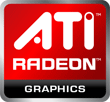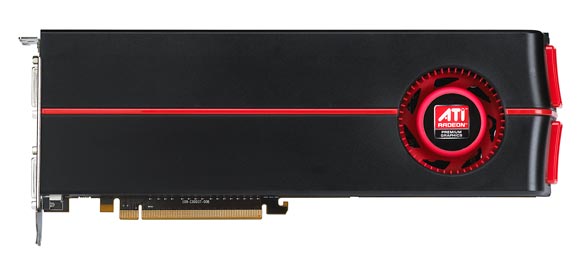ATI Radeon HD 5970 Dual-GPU Powerhouse Review
Introduction and Specifications
 AMD's "Sweet Spot" GPU strategy over the last few years has been fairly predictable. Instead of producing the biggest, most powerful GPU possible--yields be damned--the company sets out to produce a relatively high-end GPU, using a cutting edge fabrication process, that hits a proverbial sweet spot between cost and performance. Then derivatives, and even multiples, of that GPU are used to flesh out a top-to-bottom line-up of graphics cards, that hit a broad range of price points.
AMD's "Sweet Spot" GPU strategy over the last few years has been fairly predictable. Instead of producing the biggest, most powerful GPU possible--yields be damned--the company sets out to produce a relatively high-end GPU, using a cutting edge fabrication process, that hits a proverbial sweet spot between cost and performance. Then derivatives, and even multiples, of that GPU are used to flesh out a top-to-bottom line-up of graphics cards, that hit a broad range of price points.It began with the RV670, which powered the single-GPU based Radeon HD 3870 and dual-GPU Radeon HD 3870 X2--hence the X2. Then came the RV770, which powered the Radeon HD 4870 and eventually the Radeon HD 4870 X2. The strategy has obviously paid off, as AMD is once again a price/performance leader in the GPU space, after some not-so-great performances like the R600, better known as the Radeon HD 2900 XT. Knowing their strategy, it should almost come as no surprise that the graphics card we'll be showing you today, the Radeon HD 5970, has come to fruition. Although it doesn't follow the same naming convention as AMD's previous dual-GPU powered cards, the Radeon HD 5970 is nonetheless powered by a pair of ATI "Cypress" Radeon HD 5800 series GPUs, linked together on a single PCB by a PCI Express bridge, very much like previous X2 iterations.
Considering the fact that the Radeon HD 5870 is undeniably the fastest single-GPU powered graphics card currently on the market, this dual-GPU powered Radeon HD 5970 should offer performance that completely outclasses any other single graphics card on the market currently. In addition to killer performance, the Radeon HD 5970 also boasts all of the same features of the Radeon HD 5800 series, like full DirectX 11 support, ATI Eyefinity support, top-notch image quality and power efficiency.
We've got a Radeon HD 5970 in house, in full retail trim, courtesy of HIS that we've run through and array of benchmark tests. Read on to see how AMD's new flagship fares in light of competing single and dual-GPU powered solutions...

AMD Radeon HD 5970 Dual-GPU DirectX 11 Graphics Card
|
|
|
| 2.15 billion 40nm transistors x 2 TeraScale 2 Unified Processing Architecture
Up To 256GB/sec of memory bandwidth PCI Express 2.1 x16 bus interface DirectX 11 support
Image quality enhancement technology
ATI Stream acceleration technology
ATI CrossFireX multi-GPU technology
|
ATI Avivo HD Video & Display technology
ATI PowerPlay power management technology
Certified drivers for Windows 7, Vista, and XP
|

AMD's "Sweet Spot" GPU Strategy
AMD's release schedule with their latest barrage of DirectX 11 capable GPUs is outlined on the slide above. Of course, a lot of groundwork had to be laid over the years before the company could produce this line-up of products. As the above list of specifications and features show, the new Radeon HD 5970 is quite advanced in comparison to other current GPU products. But the chip does leverage technologies already implemented in previously released GPUs, so it's not all new. As such, we'd recommend perusing some recent HotHardware articles to brush up on a few of the technologies and features employed by the new Radeon HD 5970...
- AMD ATI Radeon HD 5870: Unquestionably Number One
- ATI Radeon HD 4890: The RV790 Unveiled
- ATI Radeon HD 4870 X2 - AMD Back On Top
- ATI Radeon HD 4850 and 4870: RV770 Has Arrived
- ATI Radeon HD 3870 and 3850: 55nm RV670
- ATI Catalyst Driver Analysis: CrossFireX and More
- AMD Hybrid CrossFire Sneak Peek
The articles listed above cover many of the features available with the Radeon HD 5970, like CrossFire, the UVD 2 video engine, Catalyst Control Center, PowerPlay, GDDR5 memory, and more. There are, however, a lot of brand new things that were introduced with the Radeon 5800 series that we that we detailed in our Radeon HD 5870 coverage, so that article at the very least is a must-read companion to this piece.






